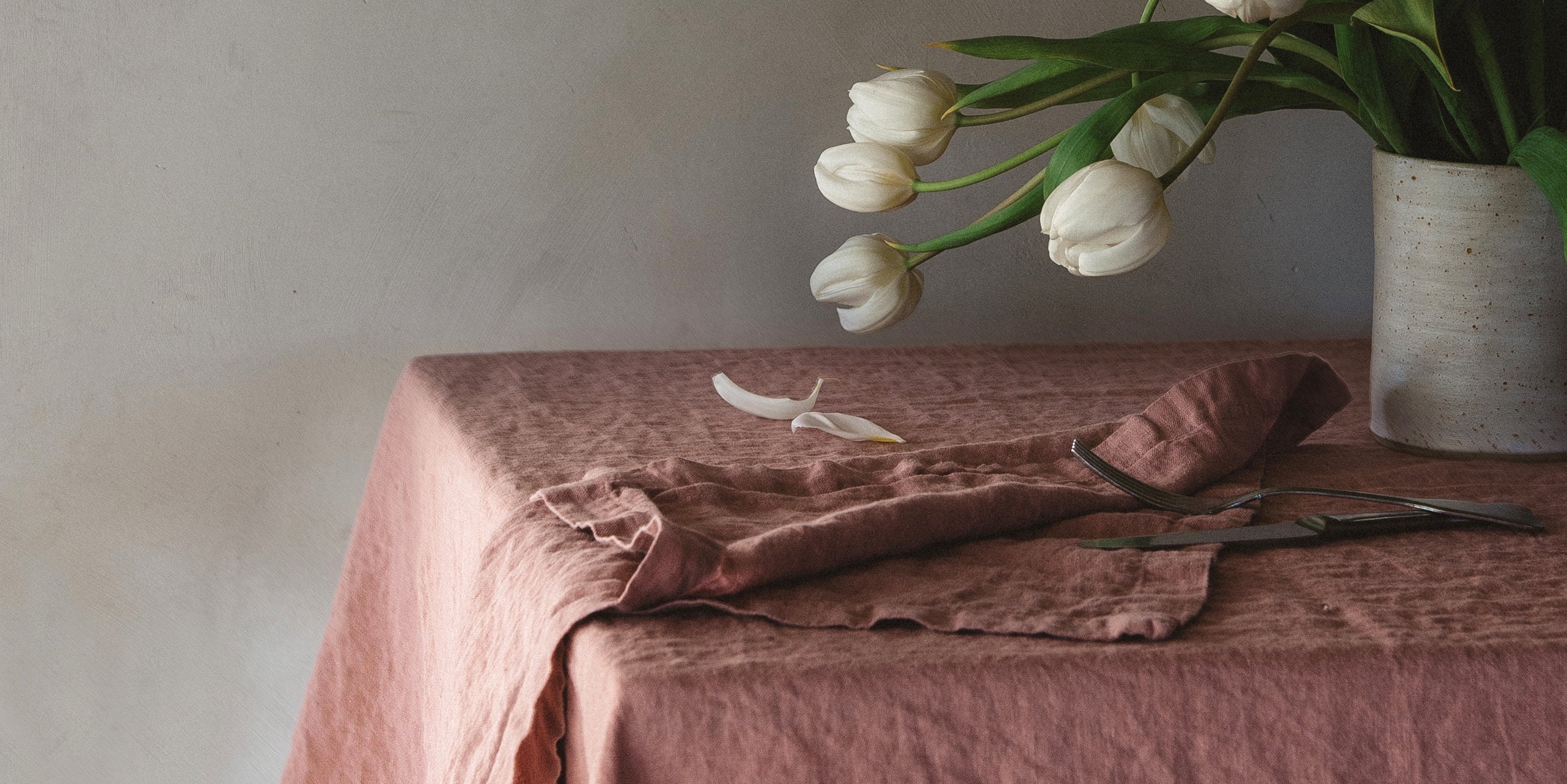Table linen has an age-old tradition. Pharaohs, kings and emperors covered the dining table with linen. The first table linen was used 2000 years ago in the Carthaginian Empire in North Africa. Guests brought a linen cloth for the leftovers of the meal - like a kind of doggy bag - afterwards. After the capital Carthage was defeated, the Romans adopted the use of the wipes. Guests were served three napkins with gold-embroidered edges with the meal. One cloth to take home leftovers from the meal, the second cloth to dry your face and hands and the third cloth was tied around the neck to protect clothing.
from luxury to etiquette
Table manners were quite simple until the Middle Ages. You ate from communal bowls with your fingers, drank soup from the same bowls and shared mugs, knives and spoons with your table companions. There were no forks. Both tablecloth and napkins were used to blow your nose and wipe hands and spoons. That changed with the introduction of linen damask. The word 'damask' is derived from the city of Damascus in Syria. Crusaders took this graceful weaving technique with them from the Byzantine Empire. Crockery, silver and dishes were displayed on this precious tablecloth. Everyone was given a plate, their own glasses and their own knife, spoon and fork. In the eighteenth century, the wealthier households paid more and more attention to the interior of their home. There was a separate dining room, where the table was set with precious damask, crystal, china and silverware. Textiles were so pricey it was a great way to show off your assets with lavishly embroidered table linen.
Around 1900, the trousseau of a marriageable girl consisted of 'over a hundred pieces of shiny linen tablecloths'. It is almost impossible to imagine, but until the 1950s, sixteen-year-old girls saved for their linen set. The linen cupboard was the woman's dowry. The more linen, the richer you were. Special sales men from textile companies came to the house with suitcases full of samples. Where nowadays you dry everything with one to two tea towels, you used to have dish cloths, knife towels, glass towels, fountain towels, and toilet towels. A special cloth with woven text was available for every household job. That way you could never use the wrong cloth. Most girls bought linen fabric to sew the set themselves afterwards. Wealthy families could outsource the embroidery of a monogram in their linens. Until the mid-1930s, white linen was the standard for a tablecloth. In the years that followed, new colours were added such as pink, yellow and green. Until the 1960s, linen belonged to the precious belongings of a family. Cheaper synthetics and cotton meant that there was less interest in linen for a while. Fortunately, more and more people are discovering the fine properties of linen in the home.
But what are the advantages?
- Linen absorbs a lot of moisture, linen tea towels dry very quickly.
- Linen does not fluff, and is therefore often used as a cloth to dry glasses.
- Linen is one of the strongest natural textile fibers.
- Linen has a natural antiseptic effect, making the fabric very hygienic.
a table for special moments
A pure linen tablecloth and beautifully folded linen napkins gives your table style. The fact that you don't throw away linen napkins, but keep reusing it is an extra reason to choose linen over paper napkins. After dinner everything goes in the washing machine and your table linen is ready for the next time. Linen does not have to be ironed perfectly, because it is precisely the small creases that give linen character. If you take good care of it, linen can last for years.


